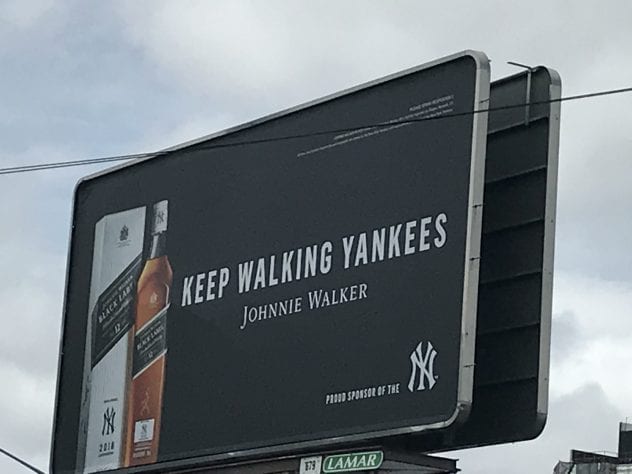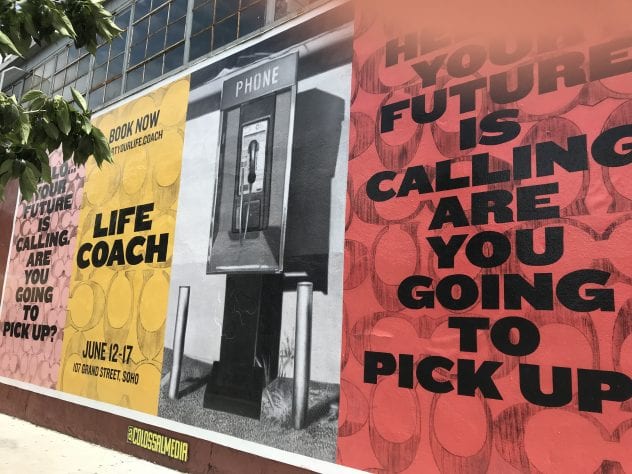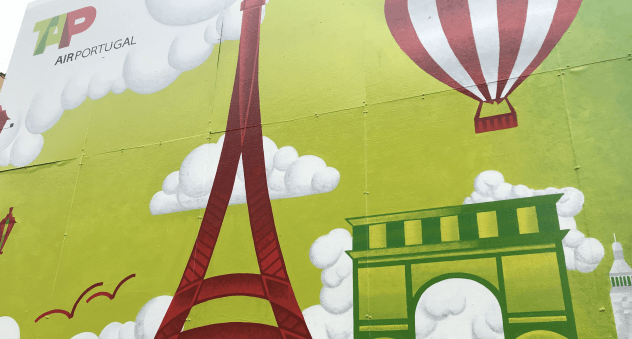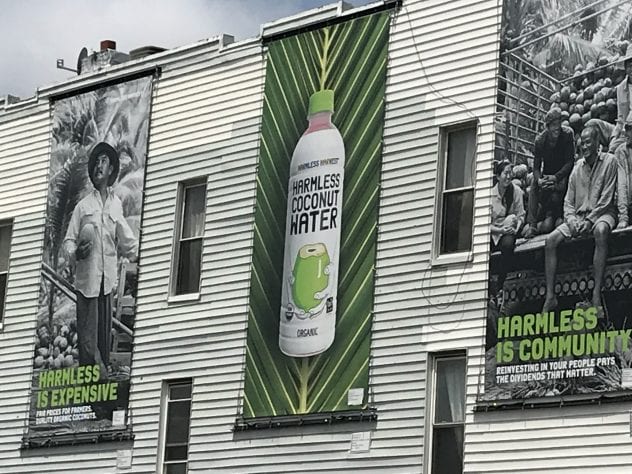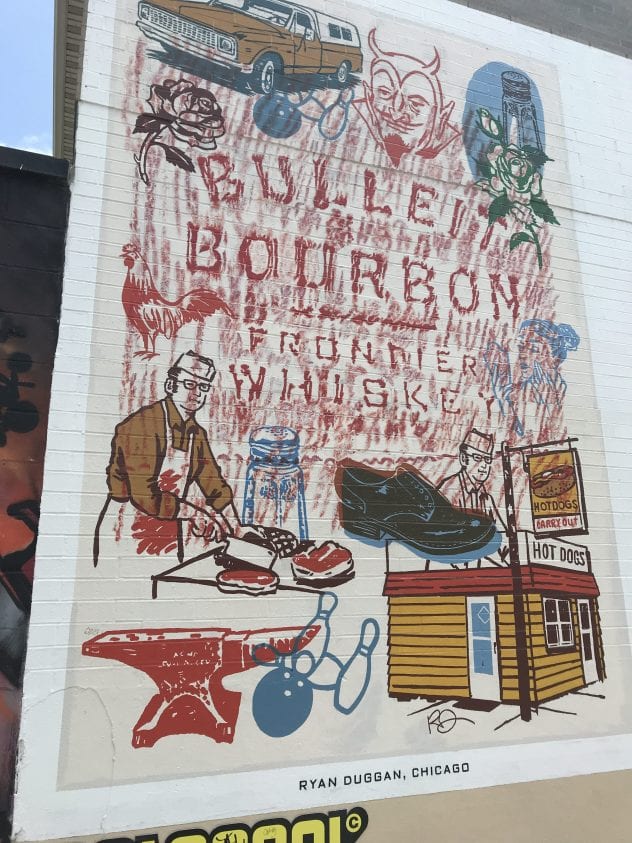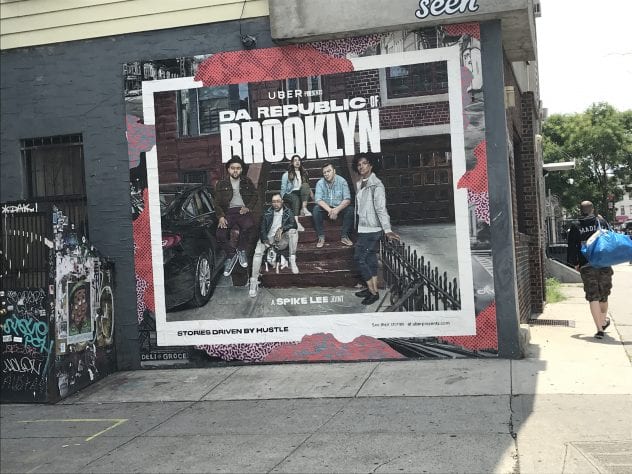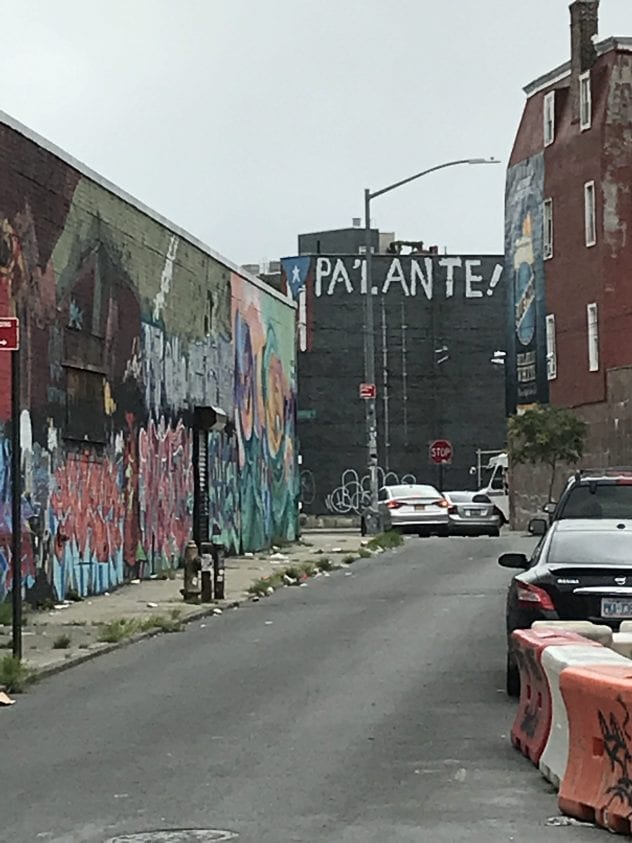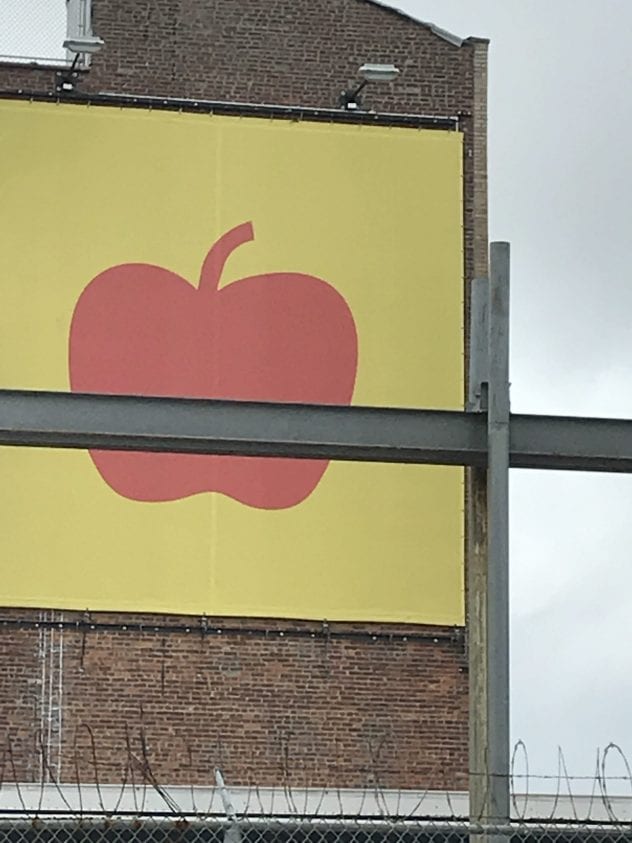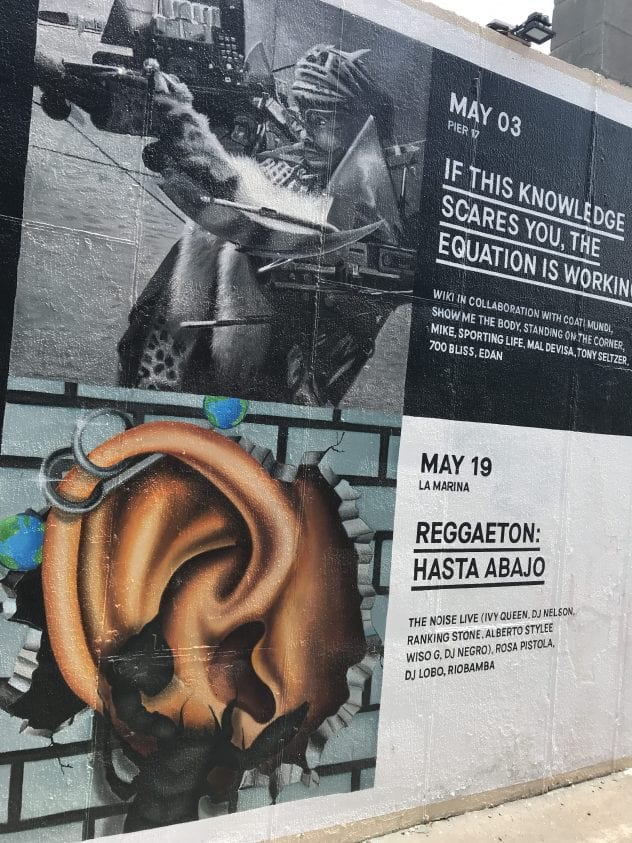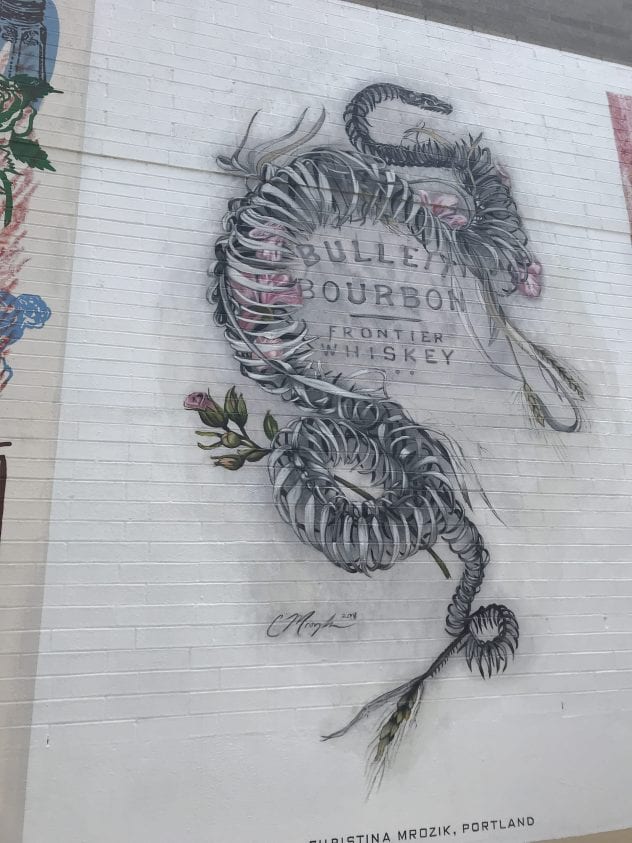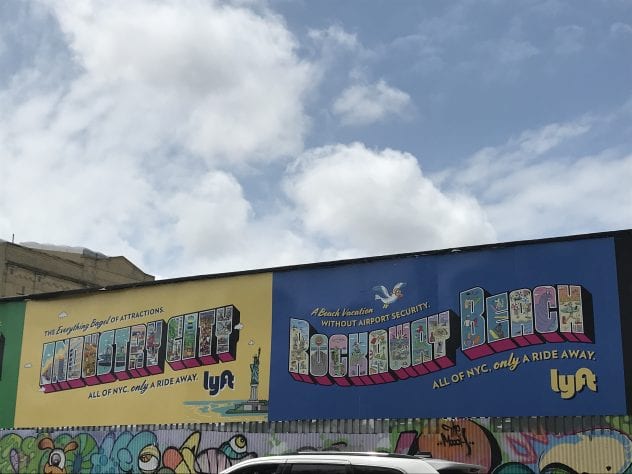Both the video “Re-writing Racists Headlines,” and the text “Gender Commercials” center their critiques on visuals that have people in them. In my visit to East Williamsburg, most of the advertisements I found were not people oriented. Therefore I decided to edit the catalog I created to analyze more accurately the visuals that I observed in the neighborhood.
My original catalog included these three sections that did not apply to the visuals that I found at East Williamsburg:
- Size and Power: The images or text that is bigger is the one that calls our attention first. On the “Re-writing Racists Headlines” video, the author mentions the “White Nationalist Protest Leads To Deadly Violence” article, and argues that there was not much space taken for an event as important as that. The author of the video concluded that the editor wanted to give more attention to other parts of the page. On the “Gender Commercials” text, the same size and power relationships are used, but with the individuals in the Relative Size category in which men are usually shown bigger than women in advertisements as a sign of power.
- Lie To Be Liked: From the video, I found that there were situations in which the editors of the article accepted to include the use of images and text that misleads the truth of what is to be said of a particular topic. A clear example of this was the title used for an article on a white American man that harassed a Lebanese family. The original title did not state the harasser was a white American man. Instead, it included the word “Tulsa” to describe the man. The title did not add the word racism either. In the video, there is also an example of an image of a track black man for an article about a man that was accused from robbery, when in fact it was talking about White American Swimmers.
- Take Out The Opportunities: In both the video and the text there are examples in which the creators of the visual discriminate a particular type of person, and make the other seem more important just for being of that race or gender. For the Gender Commercial text it was mostly done with women, and on the video for people of color.
The following is the catalog I used to analyze East Williamsburg (outside the Morgan Ave Stop of the Subway) advertisements:
- You Need It: These are advertisements that have the purpose of convincing you that you need a particular product or service to fulfill your life. These could be about anything if it makes you believe that to continue your life in the best way, you need to purchase that which is advertised. These types of communication make the audience imagine themselves living a dream.
2. “All Natural”: There is a trend on buying organic, eco-friendly products to preserve the environment and our bodies. Some advertisements use this concept as part of their primary marketing campaign. Food and drink companies usually use this technique to advertise their commitment to the environment.
3. Product Sells Itself: Some companies believe their product or service sells itself and that there is no need for any extra advertising campaign or slogan. The companies that use this technique are either very recognized and merely using their logo in the advertisement is enough to sell or are small businesses that use their product as the only medium of advertising. The second type of companies might use this technique because of their low budget, which does not give them the financial capital to afford an advertising campaign.
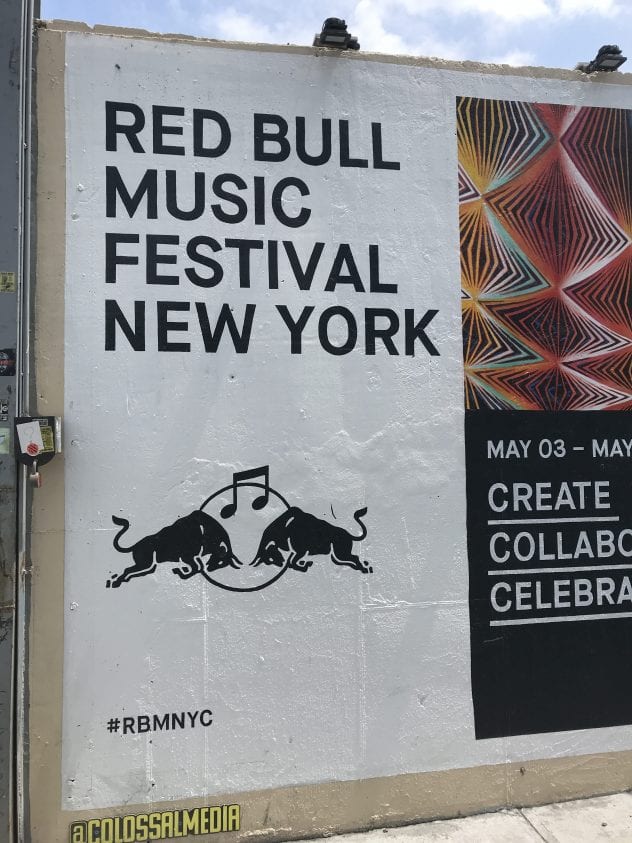
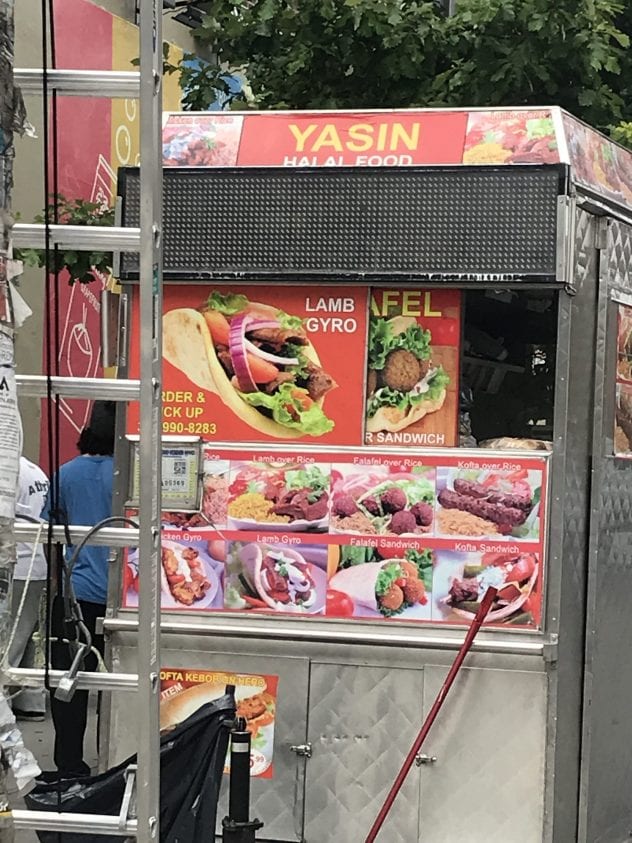
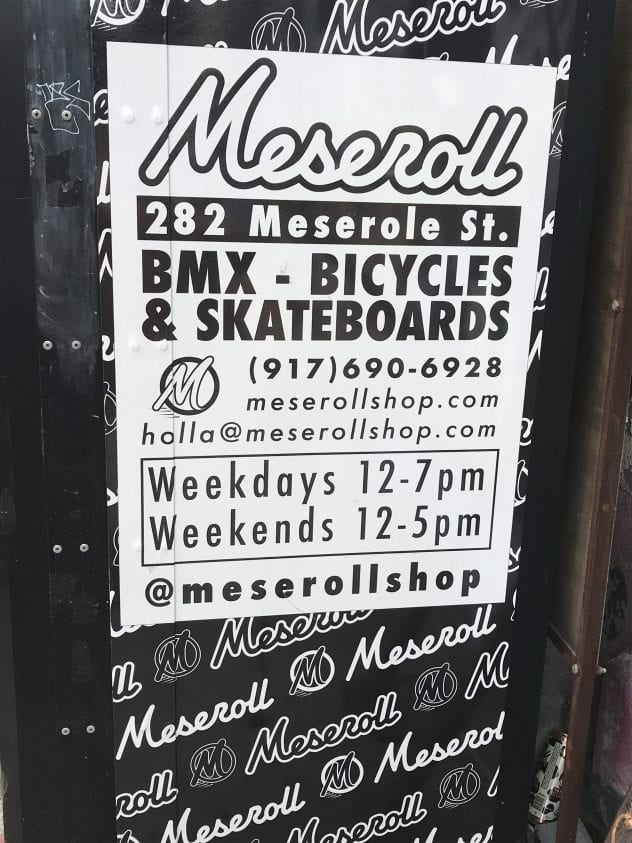
4. Share Your Culture: This type of visual media is branded or represents a specific culture. It wants to show an interest in diversity and cultural pluralism.
5. Aesthetics First: These advertisements focus on making their images aesthetically pleasing to the viewer. They usually have drawings or photographs that become the primary focus of the visual representation. This way they capture the attention of the customers.
6. Best of the Best: the company wants to convince you that they are the best at what they do. On their add, they emphasize what makes them the best; sometimes there is a description explaining it as part of the visual. One way of doing this is by including a slogan.
I adapted my catalog to the observations I made in East Williamsburg to ensure I could explain the majority of the visual culture that I encountered in the area. For my analysis of the visual culture, I focused on the five blocks around the station Morgan Ave of the L line of the NYC subway. This area is the one I visited the second time I went to East Williamsburg, and I found out was more artistic and up and coming than the space surrounding the Grand Street stop which is industrial.
I believe that the visual culture that is present in these streets is a representation of what the area is: artistic, cultural, and trendy.
Most of the visual culture in the area accompanies the graffitis around them. I got the feeling that most pieces as those used as an example in the “Aesthetics First” section of the catalog are done with the purpose of not only advertising a specific product or service but also to decorate the cities. On the other hand, I noticed the representation of a diversity of cultures in the visual aspects of Morgan Ave. The section “Share Your Culture” of the catalog gives some examples of the expression of this diversity. I also sensed that most posters or billboards touched upon trends or wanted to create one with what they were advertising. The most significant trend that I noticed was the one that calls for individuals to buy natural and organic products. On the section “all natural” of the catalog are two examples of this type of content.
The visual culture of this area makes me think is a way of helping them grow and expand as a neighborhood. One of the advertisements that I took a photo of was, in fact, promoting Lyft by including the Rockaway Beach location. This kind of recognition is the one that I believe East Williamsburg is looking to get. I have the feeling that they are trying to expand more economically. I only give them hope to achieve that maintaining the cultural pluralism in the area.
